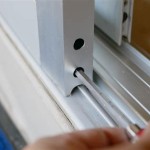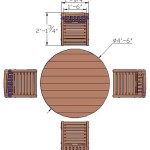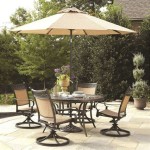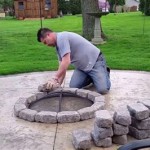How To Clean PVC Patio Furniture
PVC patio furniture offers a durable and relatively low-maintenance option for outdoor seating and dining. It is resistant to weather elements, making it ideal for prolonged outdoor use. However, despite its resilience, PVC furniture is still subject to the accumulation of dirt, grime, mildew, and other environmental stains. Regular cleaning is essential to maintain its appearance, prolong its lifespan, and ensure a pleasant outdoor experience. This article provides a comprehensive guide on effectively cleaning PVC patio furniture using simple methods and commonly available cleaning supplies.
The frequency of cleaning depends on several factors, including the furniture's exposure to the elements, the surrounding environment (e.g., proximity to trees, pollen sources, or industrial areas), and personal preferences. Generally, a thorough cleaning should be performed at least twice a year – once in the spring to prepare the furniture for the outdoor season and again in the fall to protect it during the off-season. In areas with harsh weather conditions or heavy pollution, more frequent cleaning may be necessary. Regular spot cleaning of spills and stains as they occur can also help prevent the buildup of stubborn dirt and grime.
Routine Cleaning with Soap and Water
The simplest and often the most effective method for cleaning PVC patio furniture involves using soap and water. This approach is suitable for removing everyday dirt, dust, and light stains. The procedure is straightforward and requires minimal tools and materials.
First, gather the necessary supplies. These include a bucket, warm water, dish soap (mild and non-abrasive), a soft-bristled brush or sponge, and a garden hose or a large container of clean water for rinsing. Avoid using abrasive cleaners or scouring pads, as these can scratch or damage the PVC surface. A microfiber cloth can also be useful for drying the furniture after cleaning.
Begin by mixing a small amount of dish soap with warm water in the bucket. The ideal ratio is typically one to two tablespoons of soap per gallon of water. Stir the mixture to create a soapy solution. Test the solution on an inconspicuous area of the furniture to ensure it does not cause any discoloration or damage.
Next, using the soft-bristled brush or sponge, apply the soapy solution to the PVC furniture. Scrub the surface gently but thoroughly, paying particular attention to areas with visible dirt or stains. For intricately designed furniture or areas that are difficult to reach, a smaller brush or a toothbrush can be used to access those areas. It is important to apply even pressure while scrubbing to avoid damaging the PVC.
After scrubbing, rinse the furniture thoroughly with clean water. A garden hose with a spray nozzle provides the most efficient way to remove all traces of soap and grime. Ensure that all soap residue is removed, as lingering soap can attract dirt and contribute to future staining. If a garden hose is unavailable, a large container of clean water can be used to rinse the furniture. Pour water over the surfaces until all soap is gone.
Finally, allow the furniture to air dry completely. Alternatively, a clean microfiber cloth can be used to dry the furniture, which can help prevent water spots and streaks. Once the furniture is dry, it is ready for use or storage.
Addressing Mildew and Mold
PVC patio furniture is susceptible to mildew and mold growth, especially in damp and shaded environments. Mildew and mold can not only discolor the furniture but also pose health risks. Therefore, it is important to address mildew and mold promptly and effectively. A diluted bleach solution is commonly used to remove mildew and mold from PVC furniture. However, it is crucial to exercise caution when using bleach, as it can be harmful and may cause discoloration if used improperly.
Gather the necessary supplies, including a bucket, water, bleach (chlorine bleach), a soft-bristled brush or sponge, rubber gloves, eye protection (such as goggles), and a garden hose or a large container of clean water for rinsing. The bleach solution should be diluted to a concentration of no more than 10% bleach to 90% water. It is essential to wear rubber gloves and eye protection to prevent skin and eye irritation.
Before applying the bleach solution to the entire piece of furniture, test it on an inconspicuous area to ensure it does not cause discoloration or damage. Apply a small amount of the solution to the test area and let it sit for a few minutes. Then, rinse the area with clean water and check for any adverse effects.
Once the bleach solution is prepared and tested, apply it to the affected areas of the PVC furniture using the soft-bristled brush or sponge. Scrub gently but thoroughly to remove the mildew and mold. Allow the solution to sit on the surface for approximately 10-15 minutes to allow the bleach to kill the mold spores. Avoid prolonged exposure to the bleach solution, as this can damage the PVC.
After allowing the solution to sit, rinse the furniture thoroughly with clean water. Ensure that all traces of bleach are removed, as lingering bleach can damage the PVC and pose a health hazard. Multiple rinses may be necessary to completely remove the bleach residue. A garden hose with a spray nozzle is ideal for this purpose.
Finally, allow the furniture to air dry completely. Sunlight can help to further inhibit mold growth and remove any remaining stains. Ensure the area is well-ventilated during the drying process. After the furniture is dry, inspect it for any remaining mildew or mold. If necessary, repeat the cleaning process.
Alternatives to bleach can include white vinegar or commercial mildew removers specifically designed for outdoor furniture. Always follow the product instructions carefully.
Removing Stubborn Stains
Despite regular cleaning, PVC patio furniture may still develop stubborn stains from various sources, such as tree sap, bird droppings, or rust. These stains may require more specialized cleaning methods to remove effectively. Several approaches can be used to address these types of stains, depending on the nature and severity of the stain.
For tree sap, a mixture of rubbing alcohol and water can be effective. Dampen a clean cloth with the rubbing alcohol solution and gently rub the affected area. The alcohol helps to dissolve the sap, making it easier to remove. After removing the sap, rinse the area with clean water and dry with a clean cloth.
Bird droppings should be removed as soon as possible to prevent staining. Fresh droppings can usually be removed with a damp cloth and mild soap. For dried droppings, a paste made of baking soda and water can be applied to the stain. Allow the paste to sit for 15-20 minutes, then scrub gently with a soft-bristled brush and rinse with clean water.
Rust stains can be challenging to remove. A rust remover specifically designed for outdoor furniture can be used. Follow the product instructions carefully, and always test the solution on an inconspicuous area before applying it to the entire stain. Oxalic acid solutions are also effective, but should be handled carefully with appropriate personal protective equipment. Rinse the area thoroughly with clean water after using the rust remover.
For general stubborn stains, a solution of baking soda and vinegar can be used. Mix baking soda and vinegar to form a paste. Apply the paste to the stain, let it sit for 15-20 minutes, and then scrub gently with a soft-bristled brush. Rinse with clean water and dry with a clean cloth. This combination creates a mild abrasive action that can help lift stubborn stains without damaging the PVC.
Another technique involves using a pressure washer. However, it is very important to use caution, as high pressure can damage the PVC. Use a wide nozzle and maintain a safe distance between the nozzle and the furniture surface. Start with a low-pressure setting and gradually increase the pressure until the stain begins to lift. Avoid focusing the pressure on one spot for too long, as this can cause damage. Always test the pressure washer on an inconspicuous area before cleaning the entire piece of furniture.
Implementing preventative measures can minimize the likelihood of stubborn stains. Applying a sealant or protectant to the PVC furniture can create a barrier that repels dirt and stains. Regularly wiping down the furniture with a damp cloth can also prevent the buildup of grime. Covering the furniture during periods of non-use can protect it from the elements and prevent staining.
By implementing these cleaning methods and preventative measures, PVC patio furniture can be kept clean, attractive, and durable for years to come. Careful attention to detail and consistent maintenance will help to prolong the lifespan of the furniture and ensure a pleasant outdoor experience.

How To Clean White Plastic Deck Chairs Lovetoknow

How To Clean White Plastic Garden Chairs Hawkes At Home

Best Ways To Clean Your Plastic Furniture

Easy Way To Clean Plastic Patio Furniture Running A Household

The Best Way To Make Plastic Chairs Look New Again

6 Simple Ways To Clean Plastic Patio Furniture

How To Clean Your Patio Furniture Without Ruining It

How To Clean Plastic Patio Chairs Tastefully Eclectic

How To Clean Patio Furniture Mesh Complete Guide

Simple Ways To Clean Plastic Patio Furniture The Charming Bench Company








